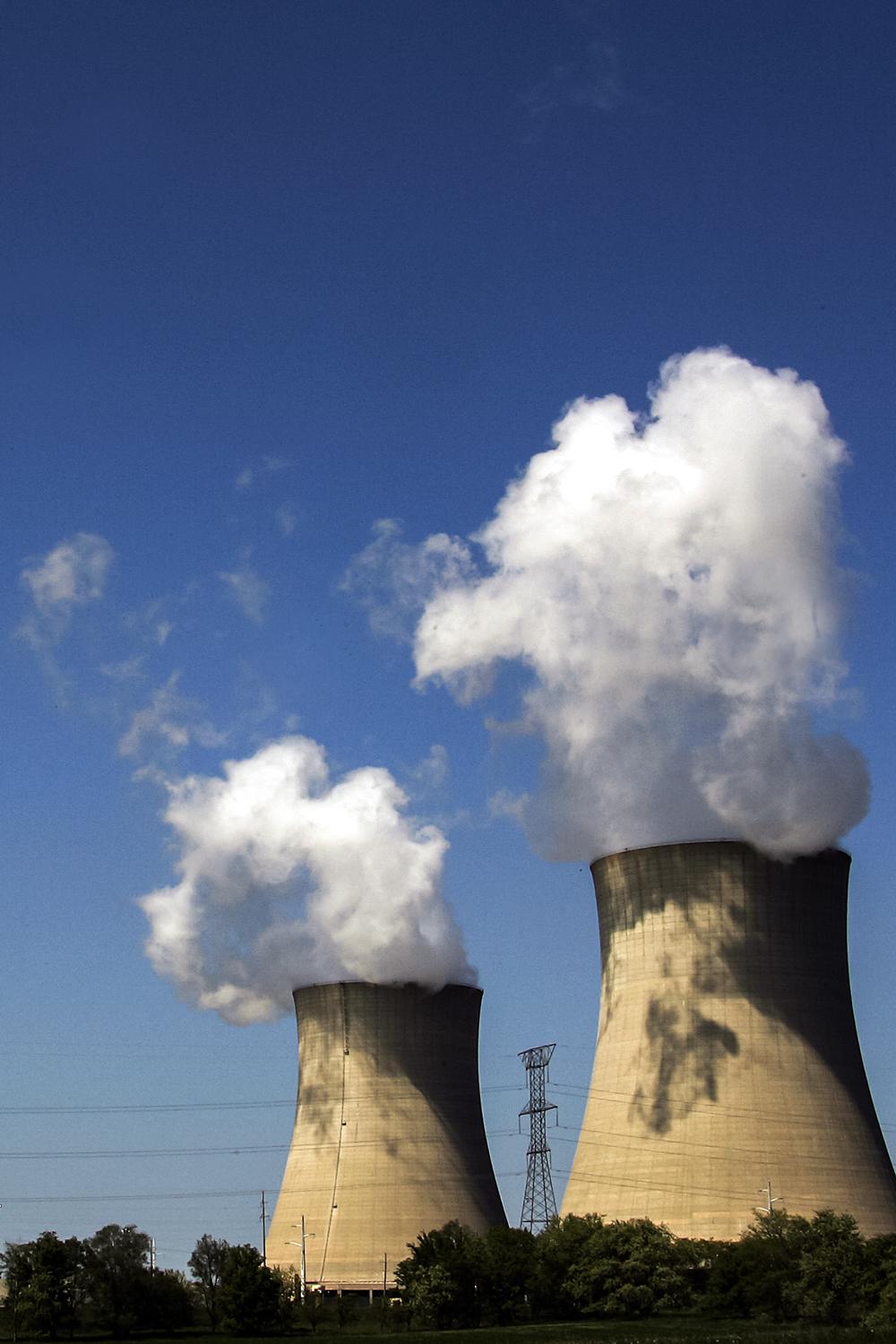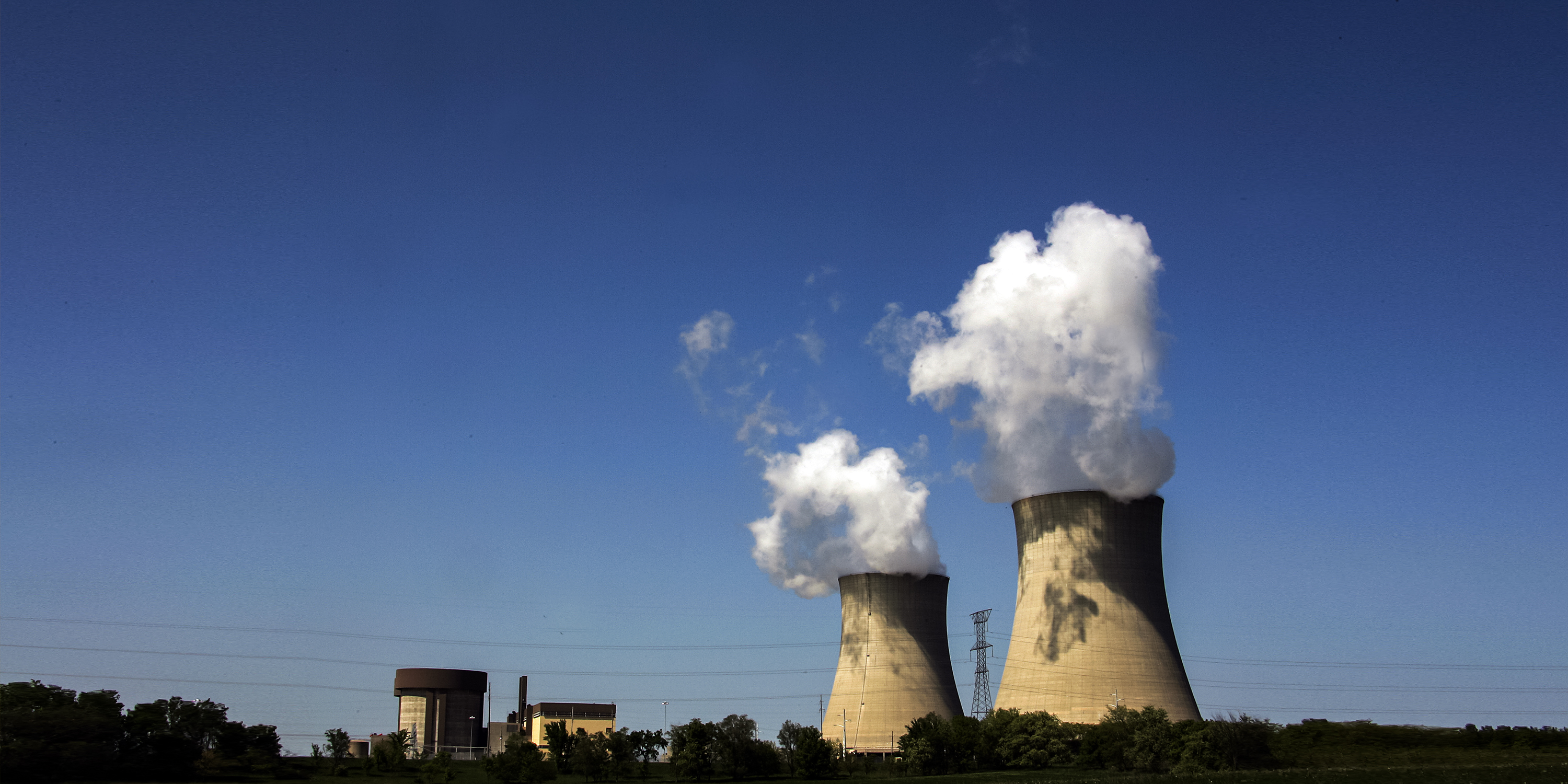As the United States continues its rush to shutter the nation’s remaining coal plants, energy analysts are debating what should fill the gap to meet the growing need for electricity. Increasingly, many are pointing to nuclear energy as the solution.
This is happening as demand from data centers, electric vehicles, electric home heating, and other products are pushing ever more consumption onto the grid.
The agency, North American Electric Reliability Corporation (NERC), cited “clear evidence of growing resource adequacy concerns over the next 10 years” in its December 2023 Long-Term Reliability Assessment.
The rapid retirement of functional coal plants, which generated more than 16 percent of U.S. electricity production in 2023, is projected to leave large gaps in the country’s ability to meet projected demand for electricity, leaving most regions of North America at high or elevated risk of shortages and blackouts, according to the NERC .
How can the U.S. electricity industry fill this ever-widening hole? The options on the table are wind, solar, natural gas, and nuclear energy—each with its advantages and shortcomings.
Many who consider climate change to be an existential threat have pushed wind and solar energy as the best alternatives, arguing that they are the cheapest, cleanest option.
Critics say adding ever more wind and solar capacity could be paying more for less, as additional weather-dependent capacity falls short of producing electricity when consumers need it.
“We built a heck of a lot of wind capacity in 2023 in the United States, but the actual amount of wind electricity produced went down, simply because you have wind droughts,” energy economist Dan Kish, senior vice president of policy at the Institute for Energy Research (IER), told The Epoch Times.
“The windiest spots have been hit pretty hard with wind turbines, so now they’re going to places that are less prolific in terms of wind, and the result is you’re getting less wind per installed megawatt of wind power than you did before.”
“Our entire grid has been built with the goal of moving power to people when they need it,” Kish said, but noted that, increasingly, this is shifting to providing electricity “whenever the wind blows or the sun shines.”

Natural Gas Steps Up, Falls Down
Wind and solar require expensive backup power generation, typically gas or batteries, to fill the gaps when the sun isn’t shining or the wind isn’t blowing, driving up costs to consumers.Coal plants, while emitting more carbon dioxide (CO2), have provided an affordable, reliable, and flexible supply of “dispatchable” electricity, which can be ramped up or down to meet demand.
To date, while installed wind and solar capacity have increased, natural gas has been the prime beneficiary of the transition away from coal—both as a supplier of base-load power and as a backup to wind and solar when the weather doesn’t cooperate.
The EIA reported that natural gas consumption set new records every month between March 2023 and November 2023, as coal-fired electric-generating capacity declined.
“The combination of [artificial intelligence] and increased reliance on intermittent renewables means more natural gas—both because solar and wind can’t easily provide electricity with low harmonic distortions that delicate data center kit needs—but also because unreliable power sources infiltrate the grid, assuring 24x7 supply relies ever more on dispatchable, traditional energy, which is gas,” Simon Lack, founder and managing partner of SL Advisors LLC, told The Epoch Times.
While natural gas is abundant, affordable, and burns cleaner than coal, it doesn’t satisfy net-zero goals of “decarbonizing” energy and reducing global emissions by at least 43 percent by 2030, 60 percent by 2035, and reaching net-zero by 2050.
Given that, nuclear energy is increasingly being touted as the ideal solution.

A Nuclear Renaissance?
The 54 U.S. nuclear plants and 93 U.S. nuclear reactors, located across 28 states, currently generate about 19 percent of the nation’s electricity, according to the EIA.By comparison, the capacity factors for wind and solar are the lowest of all major U.S. energy sources, at 35 percent and 25 percent, respectively.
Nuclear power plants are designed to run 24 hours per day, seven days per week, making them ideal for reliable, base-load electricity.
Energy economist Ryan Yonk, a director at the American Institute for Economic Research, said the safety of nuclear plants has improved with time, and although risk has not been completely eliminated, this leaves nuclear as the “no-carbon energy” of the future, provided that the industry can build plants that address risk concerns and regulatory concerns.
“If you really care deeply about CO2 and view it as a substantial problem, we have an established technology that doesn’t produce CO2, that produces large amounts of low-cost energy at relatively low risk,” he said.

Among the government initiatives was $6 billion in new loans, grants, and tax credits for nuclear facilities to keep aging plants up and running and restart some that had been shut down. This included $1.5 billion in loan guarantees to Holtec Palisades, LLC, to bring the shuttered 800 MW Palisades Nuclear Plant in Covert Township, Michigan, back online through 2050.
“Alongside renewable power sources like wind and solar, a new generation of nuclear reactors is now capturing the attention of a wide range of stakeholders for nuclear energy’s ability to produce clean, reliable energy and meet the needs of a fast-growing economy,” a White House fact sheet reads.
The bill includes more staffing for the Nuclear Regulatory Commission (NRC), which would theoretically speed the licensing process, reduce fees for plant applicants, and update the NRC’s mission statement, stipulating that it will not “unnecessarily limit” the production of nuclear energy.

Partnering With Nuclear Industry
The DOE is also working to ease the conversion of existing coal plants to nuclear.According to the DOE’s Office of Nuclear Energy, “we’ll need an additional 200 gigawatts of nuclear capacity to reach net-zero emissions by 2050 and some of that could take place at or near retiring coal plants.”
The agency stated that more than 300 existing and retired coal plants could be converted to nuclear energy, and this would increase the U.S. nuclear capacity by more than 250 gigawatts, nearly tripling its current capacity of 95 gigawatts.
Borrowing land, plant, transmission connections and roads from existing coal plants could save up to 35 percent of construction costs for new nuclear plants, the DOE predicted.
States that are considering replacing coal plants with nuclear include Arizona, Colorado, Kentucky, Maryland, Montana, North Carolina, Pennsylvania, Utah, West Virginia, Wisconsin, and Wyoming.
“By 2030, the U.S. nuclear industry will be equipped to lead the world in the deployment of innovative nuclear technologies to supply urgently needed abundant clean energy both domestically and globally,” GAIN reads.
Some analysts say it amounts to one government agency spending money to try to get another government agency out of the way.
“We’ve got the NRC that can’t seem to issue a permit or give a thumbs up to a project, and to compensate for that, we’ve got the Department of Energy pouring hundreds of millions of dollars of taxpayer money into helping them get a permit,” Kish said.
The U.S. fleet of nuclear plants is approaching retirement age, raising questions about how much longer existing plants can continue to operate. The average life of a nuclear power plant is about 40 years, according to the International Atomic Energy Agency (IAEA).
The U.S. nuclear construction industry, having been shunned for decades, appears now to be showing new signs of life.

In April, the fourth reactor of the Vogtle Nuclear Plant in Georgia, designed by Westinghouse, came online, making the plant fully operational.
Skepticism Remains
While this all suggests a surging demand for nuclear energy, concerns about nuclear energy linger.These concerns stem from the fact that nuclear energy creates nuclear waste and from the plant meltdowns at Chernobyl in Ukraine (1986), Three Mile Island in Pennsylvania (1979), and Fukushima in Japan (2011), as well as the time and cost to build nuclear plants.
Dean Cooper, the global lead for energy at the World Wildlife Fund, said in a March blog post, “Let’s be clear—there’s no new dawn for nuclear energy.
“The truth is that the construction of new nuclear power generation capacity is too slow, too expensive, and too risky to make a difference.
“Rather, governments must prioritize investments toward energy efficiency and deploying renewables, such as wind and solar, to decarbonize the grid.”

The report states that construction on two AP1000 reactors at the Summer Nuclear Station in South Carolina that began in 2012 was canceled in 2017, leaving South Carolina residents to pay the bill for a failed project that cost $9 billion.
Public opinion regarding nuclear energy still sees it as its second-best option to wind and solar when it comes to fighting climate change, although those perceptions may be changing.

While this number is below the 78 percent who prefer expanding solar power and the 72 percent who favor expanding wind power, the survey noted that support for solar and wind power fell by double digits percentage points since 2020 while support for nuclear power grew by 13 percentage points.
Government intervention at the federal and state level is manipulating the industry away from what it can realistically achieve, they say, making the electric grid both more fragile and more expensive while disregarding Americans’ growing need for affordable, reliable energy.
“One of the major issues that comes up in the energy mix is that because we’ve spent so much time regulating and subsidizing within it, we don’t have a real clear sense of what the mix would be if it were based on consumer demand and the market’s capacity to provide,” Yonk said.
“One of the ways to get closer to that is to deal with the regulatory problems and to remove the subsidies so that we start to see the emergence of a mix that matches consumer demand; at the moment, we don’t have that.”
















